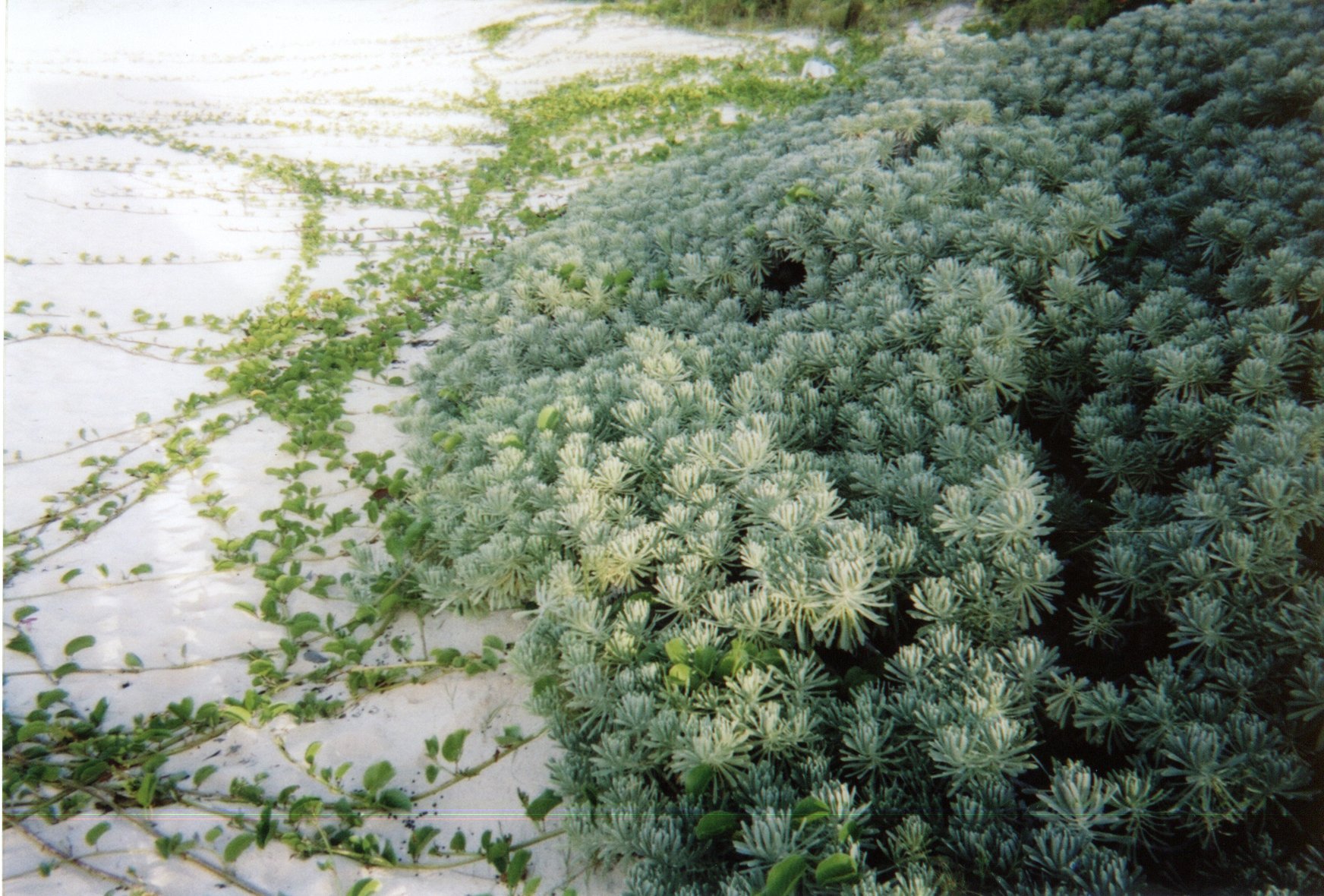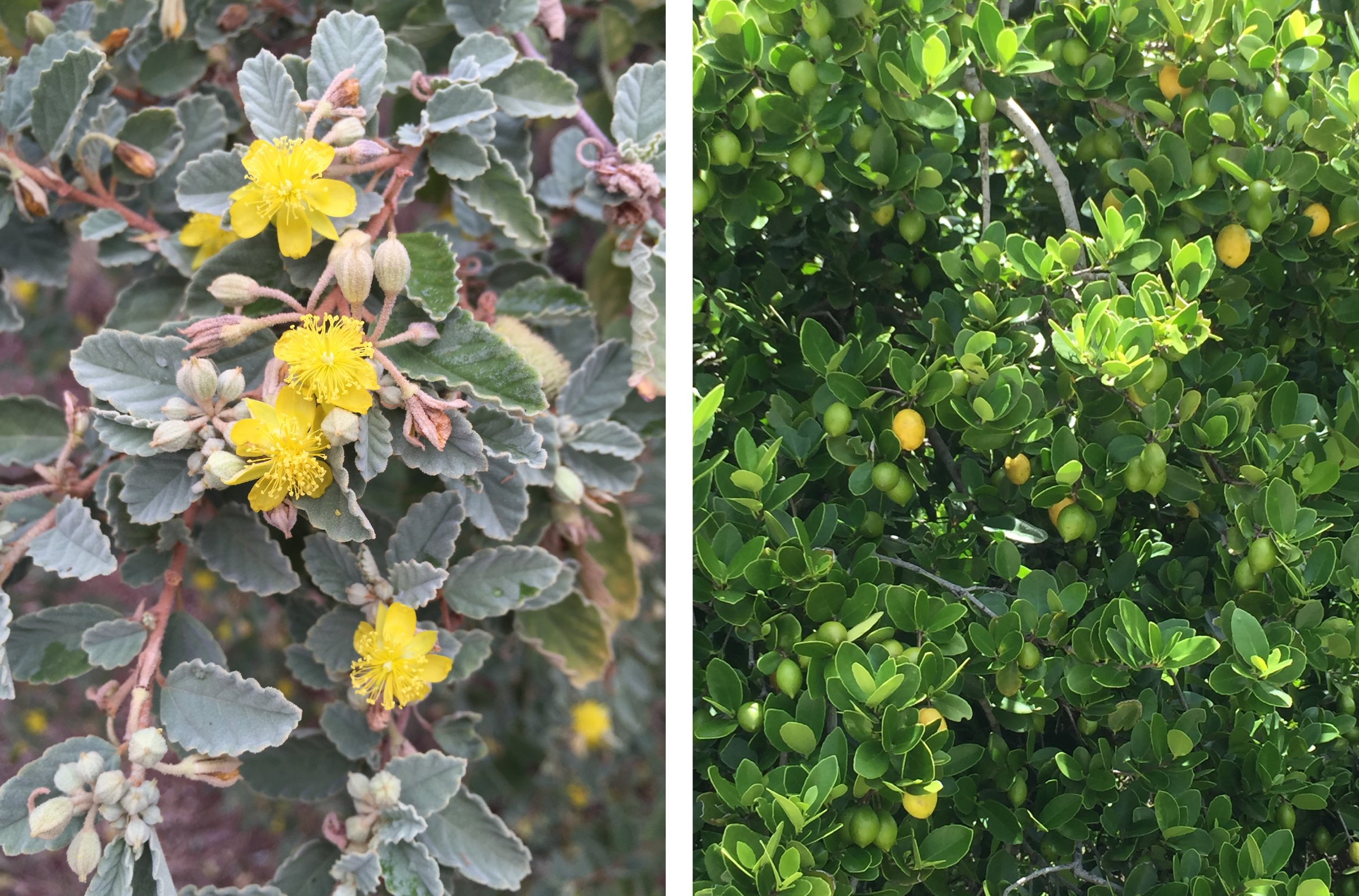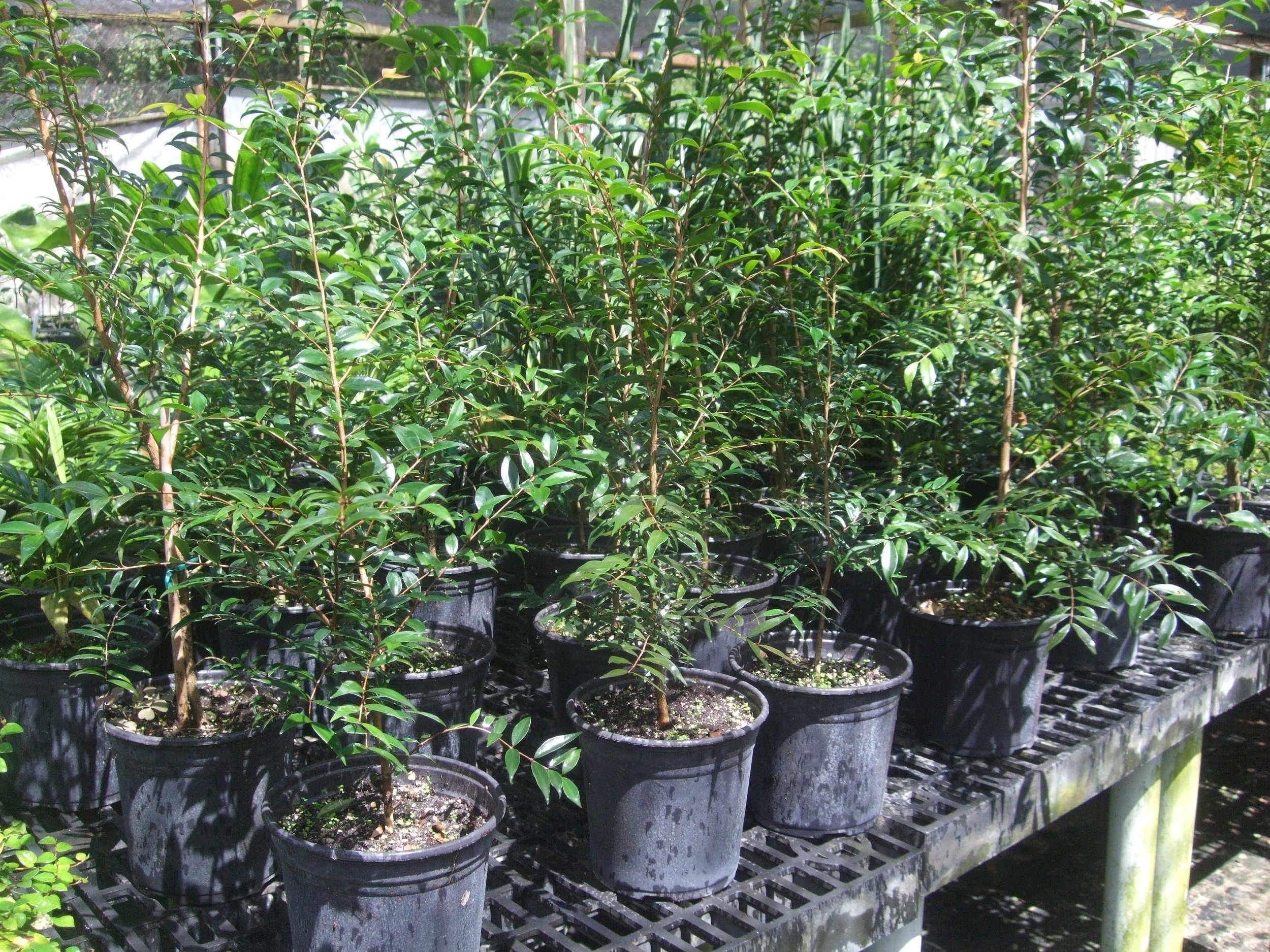THE NON-GARDEN
VIRGIN GORDA, BRITISH VIRGIN ISLANDS
PROJECT STATUS | BUILT
PROJECT BACKGROUND
In 2012, we joined a private resort compound designed by Brazilian architect Isay Weinfeld, already under construction. The project featured four hillside bungalow suites and a social building with shared spaces, anchored by a 120-foot infinity lap pool and a beachfront gazebo. Cantilevered over steep terrain, the modernist structures were carefully positioned to ensure privacy from the main road above and between the bungalows.



THE CHALLENGES
The owners sought to restore the topography, healing the scars of excavation so the buildings appeared to emerge from natural, undisturbed vegetation. They did not want ornamental gardens, but a landscape that felt native and uncontrived. The challenge was to screen the service building roof and partially conceal the bungalows beneath a reconstructed 45-degree slope, filling cuts and cavities with soil and carefully chosen plantings.







The most difficult challenge was screening a large rental residence that unexpectedly appeared uphill after the land was purchased. Perched nearly 80 feet above the site, the massive complex dominated views, and limited space made a tall vegetative buffer impossible. For a full description of this issue, see Aquasur.
EMULATING THE UNTAMED
Inspiration came from observing vegetation in its natural habitats, where species and soil communities support one another and clarity emerges when systems evolve freely. The “non-garden,” like any garden, is composed and partially controlled, but with a different philosophy: it is not a finished artifact meant to complement a building, but a continual process of plants interacting under observation, care, and stewardship. Sustained by an understanding of climate, site conditions, and external forces, it evolves through choices of what to edit in or out, revealing new possibilities.













Consequently, the non-garden is difficult to capture in both its vastness and its details—any image is only a snapshot of plants at a single moment in time and cannot convey its full complexity. More than something to be represented in awards submissions or on social media, it is a living organism that must be experienced directly and appreciated in its constant transformation.
INVITING RARE AND ENDANGERED SPECIES
The best starting point for grouping plants with long-term adaptability to a site and its microclimate is to prioritize native species. Except in highly altered urban sites, using as many natives as possible provides resilience and ecological fit. When compatible in their competitive strategies, native species can be complemented by adaptable introduced plants, allowing both to grow together under the same environmental stresses and disturbance regimes.















The concern for using native plants stems largely from their dramatic decline in the wild and the accompanying loss of wilderness in both our landscapes and cultural memory. Often, the landscape architect is the only member of a design team attuned to the vulnerability of a site or to the grief of anticipated ecological losses from environmental change. In this project, the degraded landscape and its exposure to drought, sea-level rise, and hurricanes made the selection of native, endemic, endangered, and adaptable species central to shaping resilient plant communities.
SOURCING AND GROWING
The non-garden requires a pre-design phase of studying plants in the wild—identifying species, sourcing seeds and cuttings, and observing offspring long before recommending their use. In the islands, the “wild” often survives only in fragmented, degraded patches periodically disturbed by storms. Here we learn when plants flower and fruit, which birds disperse them, what pollinators they need, and how pests or diseases threaten their survival.
















In the nursery, seedlings are studied from the moment they sprout—observing morphology, weaknesses, preferences, and shifts at every stage of growth. This knowledge precedes plant selection for any project. Because native supply is often limited, adaptable exotic and naturalized species are also tested for compatibility and resilience.
We experience profound joy when discovering that a plant we introduced has become a host for a butterfly species we hadn’t anticipated. In those moments, we face a delicate choice: leave all the eggs and allow caterpillars—vital to birds—to defoliate the plant, or gently remove a few to balance plant health with wildlife needs. Even in a non-garden landscape, we remain subtle stewards, guiding its destiny while respecting ecological interdependence.
LEARNING ABOUT TEXTURE
Plants are arranged in groupings that evoke memory and emotion through pattern and texture rather than singular flowers or color masses. In the tropics, contrast emerges from the subtle harmony of analogous greens, while seasonal bursts of flowers and fruits create temporary shifts that enrich the landscape and highlight ecological cycles of pollination and seed dispersal.











Textural compatibility in plant groupings is discovered through trial and error, as each community reveals its adaptability and physiological needs within a site. This approach avoids the gaudy contrasts of variegated cultivars or the monotony of large drifts of a single species, favoring instead vertical complexity, biodiversity, and resilience that support long-term ecological balance.
What is often described as a “naturalistic look and feel” may actually be the result of a carefully engineered composition, where native and adaptable species are combined to support one another both functionally and visually.
A TROPICAL TEMPORALITY
Wild, non-modified plant species that appear and disappear with the seasons help restore a sense of change in the Caribbean, where temperatures remain constant year-round and most plants are imported through commerce and popularity. In the non-garden, flowers and fruits arise not for ornament but for pollinators, birds, and other wildlife that share the soil and space with us.















The small flowers of wild species reflect a long evolutionary process, finely tuned to withstand environmental stresses and to match the scale, shape, and needs of the insects or birds they rely on for survival and reproduction. By contrast, horticultural hybrids bred for larger blooms or extended flowering seasons often provide little ecological service, lacking the pollen, nectar, or fruits that sustain wildlife.
ACCEPTING NEWCOMERS
In the non-garden, plant communities are understood as shifting, temporal associations rather than fixed compositions. Species meet, overlap, and interact in countless ways, with naturalized plants—including once-dismissed “weeds”—often contributing resilience on difficult sites when compatible and non-invasive. Seeds and cuttings disperse by wind, water, animals, or human activity, and each species’ survival depends on chance, competition, and adaptability. It is by studying and anticipating these forces that we guide the management of the non-garden—departing from conventional horticultural practices in favor of ecological processes.











PLANNING FOR COMPETITION
Rather than spacing plants as isolated objects, the non-garden embraces dense planting, allowing natural competition to shape resilient communities. In nature, species overlap horizontally and vertically from the start, contending for light, water, and nutrients. Seedlings often sprout in abundance around parent plants, sheltered by a temporary cover until competition determines which survive. By designing with this process in mind, we create plant communities that establish themselves through natural selection rather than controlled avoidance of competition.








In tropical coastal woodlands, planting design begins with density and vertical layering from day one—selecting species for canopy, mid-story, understory, and ground cover to create a complete structure. Fertilizer, irrigation, and soil amendments are kept to a minimum, encouraging plants to adapt and build resilience naturally. Overplanting the understory is intentional, knowing that as trees mature, some plants will be shaded out or require transplanting. Through these timely disturbances, we guide rather than control, allowing ecological processes to shape long-term growth.
Management decisions often involve timely interventions—such as root-pruning and relocating young trees to provide light for understory shrubs, or removing plants to favor those better suited to the site. Even when we refrain, natural forces like hurricanes will inevitably reshape the composition. Ultimately, the plant community reveals its character through how it responds and adapts to the site and its disturbances.
A CHARACTER IN DEFINITION
The first three to five years of stewardship are critical for shaping a garden’s character. While it may seem necessary to provide constant support—watering, fertilizing, and amending soils—excessive intervention can alter the land’s inherent nature, preventing it from developing the very qualities that made the site compelling in the first place.








In the wild, it is often scarcity that shapes resilient plant communities, determining which species can endure and establish over time. Gardens should follow the same principle—allowed to adapt and evolve gradually, defining their own physiognomy. When we impose excessive control by topping, pruning, or treating plants as screens or carpets for our use, we shorten their lives and diminish their character. True success is revealed when shrubs and vines are free to sprawl, intertwine, and soften walls in a lush, effortless way—proof that the garden has grown into itself.
UNDEFINED AT THE EDGES
Blurring the boundaries between garden and landscape is not a new idea, but today it carries urgent meaning. Wilderness is vanishing acre by acre, leaving only fragmented patches surrounded by expanding development. The old paradigm of the garden as a fenced paradise, set apart from hostile surroundings, no longer applies. Instead, our role as designers is to reconnect these fragments—linking regional landscapes, urban edges, and even small garden sites into a larger ecological network.
THE ONLY GRASS GREEN
In this project, habitat fragments within the garden were allowed to recover under our care, giving meaning to what persisted both physically and metaphorically. The only remaining lawn was a circular grasscrete platform built as a helicopter landing pad, which by our arrival had degraded into a weedy patch surrounded by flooding and poor grading. The adjacent slopes, cleared to form the circle, had been overtaken by invasive species—an urgent reminder of the site’s need for ecological repair.





After introducing positive drainage and replanting the surrounding slopes with grasses and forbs, the circular platform took on the character of a clearing within tall grasses and shrubs swaying in the wind, ready to receive each helicopter landing. The deliberate contrast between the soft movement of grasses and the sculptural presence of agaves heightened the sense of place.
THE ONLY WALLED GARDEN
The architects designed a walled enclosure facing the kitchen window of the main social building, where retaining walls held the living space more than ten feet below the drive and entry level. Enclosed on all four sides, the space lacked cross-ventilation—a condition we typically avoid in tropical climates, where natural breezes are essential for cooling and comfort.










The ground was crowded with utilities and dominated by a large catch basin, leaving no depth for proper planting soil. We engineered drainage and built mounds to support larger palms, while introducing a mix of species suited to the shaded, enclosed conditions. Over time, vines softened the concrete walls and blended them into the canopy of trees planted above, transforming the space into a green extension of the landscape.
AFTERWARD
What began as an effort to heal excavation scars became a broader exercise in listening—allowing plants, soil, and climate to guide the outcome. The non-garden emerged as both philosophy and practice: a landscape that restores rather than decorates, adapts rather than resists, and evolves rather than concludes. In this way, the project is less a finished composition than an ongoing conversation with the land, one that continues to shape its own future.













